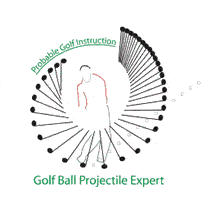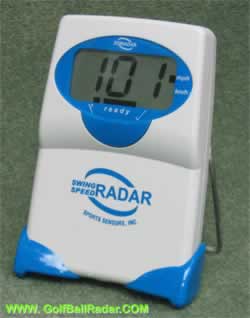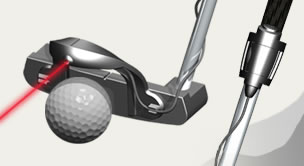
|
|
|
Golf Playing LessonsFrom this page, you can access playing lessons for various parts of the game. Click on the topics below and you'll be taken to the appropriate place in the website. Look below the navigation menu (the one below this sentence) for the specific page's content.
The 1st Hole -- StrategyClick here to order Dave's Pelz's Short Game Bibile, OR get it at your local bookstore. BUT, whatever you do, GET IT !! Your game will love you for it. The First Tee -- Hole #1 So, Hole #1, or more importantly, the first tee, the first shot of the day that counts. It's always nice to start off with a good tee shot and a good first hole for it can set the tone for the round. One wants to take steps that will increase the chances of this happening. Sometimes, however, it doesn't and you have a bad start, but that can be dealt with positively as well. I played a lot of my golf at Salmon Arm Golf Club, one of the most beautiful and quite challenging golf courses in Canada. It's nestled in a beautiful valley, has lots of trees (mainly very tall fir) and is very hilly. The first hole is a 390 yard dogleg left par 4. The tee is elevated and the fairway at the dogleg sloping left to right. It's not a very easy starting hole, especially most golfers that hit a fade or slice (most golfers). Medium-long to long hitters can hit through the dogleg into two fairway bunkers. From the landing area, the green is a little uphill and slopes left to right and back to front (not an easy start for putting either). The green is guarded front right by a large bunker. Right of the green are mounds; if the ball lands on the right side of the mounds, it'll likely kick out-of-bounds. The first hole is definitely not straighforward and has potential for some high scores even though under 400 yards. Thus, given it's difficulty and that this hole occurs early, it's important to "play the odds" and not take uneccessary risks. There is much more likelihood that you will score a 6 or worse on this hole than and birdie. For most golfers at my club, they are quite happy with a bogie. I usually hit a 2-wood or 2-iron off the tee. A driver will definitely put me in the bunkers through the dogleg and I can't turn the ball right to left with it. My 2-wood is one of my favourite clubs and I can typically turn it and won't hit it far enough to get into the bunkers. If the hole is playing downwind, then I definitely hit a 2-iron. With either club, given the conditions, I'm left with anywhere from a 6-iron to a 9-iron, depending upon how well I hit it and how much I can turn it left. Now, the left side of the fairway is lined with trees; hit it left and you can only chip it out. So, if in recent rounds I have been battling a pull or pull hook, I'll definitely aim to the right side of the fairway and accept a longer shot into the green. For a shorter hitter, it's definitely advisable to choose a club that you can be confident will hit the fairway. Staying clear of the left side is a must which means accepting a longer shot into the green. If one plays the hole "conservatively" like this, his/her stroke average will be lower than if an aggressive approach is taken (attempting to get the ball around the corner for a short shot to the green). And, it's best to start out on the conservative side so a dreaded "other" doesn't throw us off right at the beginning of the round.
So, that's the kind of mentality I use on the first hole. I tend to average about 4.3 on this hole. I can count the number of birdies I've made using two hands. With my "playing the odds" approach, I have avoided the big number starts. For every golfer, the key to shooting the lowest score day in and day out, is to play within his/her ability. Don't take uneccessary risks. The temptation is always there to make that miracle shot, that amazing par, because of course, you've done it before, at least once. Surely you could do it again, when you really need to! Not likely. You need to know your own, unique"shot pattern" , and play the percentages to your advantage. See a more detailed example HERE. In future newsletters, I'll explain how I deal with other "surprises" in the course of the round. I won't go through how I play each and every hole. I think I'd lose a number of you that way. Send me some feedback or ask some questions before I put out the next newsletter. Use this simple form. Now, go get that book . Go to your local bookstore and get it OR click here, Click here to order Dave's Book, to order it from amazon; I'll make a few cents from your purchase. If you'd like more detail on choosing a new driver, purchase my special report. Buy Now for $10.99 or get it for free by purchasing a Swing Speed Radar. If you have any questions or comments, feel free to email me at golfexpert@probablegolfinstruction.com ©Probable Golf Instruction, Ken Tannar 2001-2011. All Rights Reserved. Langley, B.C. V2Y 2G4Phone: 604-539-7760 FAX: to fax, email an attachment probablegolf@yahoo.ca or golfexpert@probablegolfinstruction.com |
| GOLF SOFTWARE |
|
Power Meter measures Swing Speed
|
| GOLF NEWS |
|
| GOLF NEWSLETTER |
Statistics
·Putting
·Long Balls
·Games
·Handicap
·Scoring
·Shot Patterns
·Tournaments
·Tours
Pro Shop
·Ball Marker Engraved
·Books
·CDs & DVDs
·Green Reader
·Impact Labels
·Laser Rangefinder
·Longer Drives
·Products
·Teaching Aids
|
Subscribe to the Probable Golf Newsletter
and
|
| GOLF POLL |
The 19th Hole
·Advertising
·Ask the Golf Expert
·Consultation/Litigation
·FAQs
·Golf Blog
·Golf Draws
·Links
·Science of Golf
·Tell a Friend
·Testimonials
·

Golf Ball Finder Glasses
·
| GOLF CARTOON |







